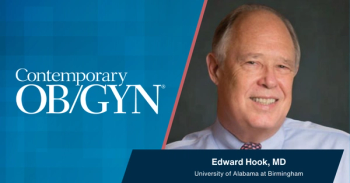
No clear advantage of staples vs sutures found for cesarean closure in obese patients
A new meta-analysis found no significant difference in wound complications between metal staples and subcuticular sutures for post-cesarean skin closure in obese patients.
The odds of wound complications, surgical site infection, and wound separation do not differ between metal staples and subcuticular sutures in obese patients undergoing post-cesarean skin closure, according to a recent study published in Pregnancy.1
In 2021, 32.1% of pregnant US patients underwent cesarean delivery (CD), highlighting the prevalence of this delivery method. Amidst rising rates of obesity, defined as a body mass index (BMI) of 30 kg/m2 or higher, concerns have arisen about an associated increase in CD risk, linked to postoperative complications.2
“While previous meta-analyses have shown that cesarean skin closure with subcuticular sutures compared to staples is associated with lower wound complication rates… recent randomized controlled trials (RCTs) have indicated that metal staples compared to suture are not associated with higher rates of wound complications in obese patients,” wrote investigators.1
Clarifying best practices
The systematic review and meta-analysis was conducted to determine the optimal method of skin closure in obese patients undergoing CD. After assessing prior reviews about this topic, investigators searched the PubMed, Web of Science, Embase, and Scopus databases for articles published through November 30, 2022.
Gray literature sources were also assessed, alongside the reference lists of identified studies. Manuscript abstracts, full manuscripts, and conference abstracts were eligible for inclusion.
Additional eligibility criteria included reporting wound complications, surgical site infection, and wound separation. Studies excluding obese patients or not reporting outcomes pertaining to this population were excluded from the analysis.
Study screening and characteristics
Title and abstracts were screened by 2 independent reviewers, after which these reviewers performed full-text screening. Discussion or input from the senior author were used to resolve disagreements. If necessary, study authors were contacted to provide additional information.
Extracted data included study protocol, study characteristics, and outcomes of interest. A modified Jadad score was used to evaluate study quality.
There were 8 randomized studies with 1748 participants included in the final analysis. Assessments indicated these studies had high quality and a low risk of bias. Based on study results, non-absorbable staple did not increase the risk of wound complications vs subcuticular suture in obese patients receiving skin closure after CD.
No significant differences found in complications
Rates of complications were 13.6% in patients receiving non-absorbable staples and 12.1% among those receiving subcuticular suture. This indicated an odds ratio (OR) of 1.20, highlighting no significant difference in risk.
For surgical site infection, rates were 5.2% and 10.5%, respectively, indicating an OR of 0.47. While this highlighted a reduction in risk from non-absorbable staples, a fragility index score of 1 highlighted a tenuous pooled OR.
Wound separation rates did not significantly differ between methods of skin closure in the meta-analysis, at 9.1% following metal staples vs 9.4% following suture, indicating an OR of 0.98. In the fragility analysis, robust data was noted for wound complications and wound separation, needing over 10 specific event-status modifications to be substantial.
No definitive recommendation
A moderate certainty of evidence was reported for wound complications and high certainty for both wound separation and surgical site infections. Overall, the results highlighted no significant difference in wound complications among obese patients receiving metal staples vs subcuticular sutures for skin closure following CD.
“Therefore, no definitive recommendation can be made regarding the optimal method of post-cesarean skin closure in obese patients,” wrote investigators.
References
- McKinney JA, Vilchez G, Mateus Nino J, Lin L, Sanchez-Ramos L. Post-cesarean skin closure with metal staples versus subcuticular suture in obese patients: A systematic review and meta-analysis of randomized controlled trials. Pregnancy. 2025. doi:10.1002/pmf2.70061
- Conner SN, Verticchio JC, Tuuli MG, Odibo AO, Macones GA, Cahill AG. Maternal obesity and risk of postcesarean wound complications. Am J Perinatol. 2014;31(4):299-304. doi:10.1055/s-0033-1348402
Newsletter
Get the latest clinical updates, case studies, and expert commentary in obstetric and gynecologic care. Sign up now to stay informed.










